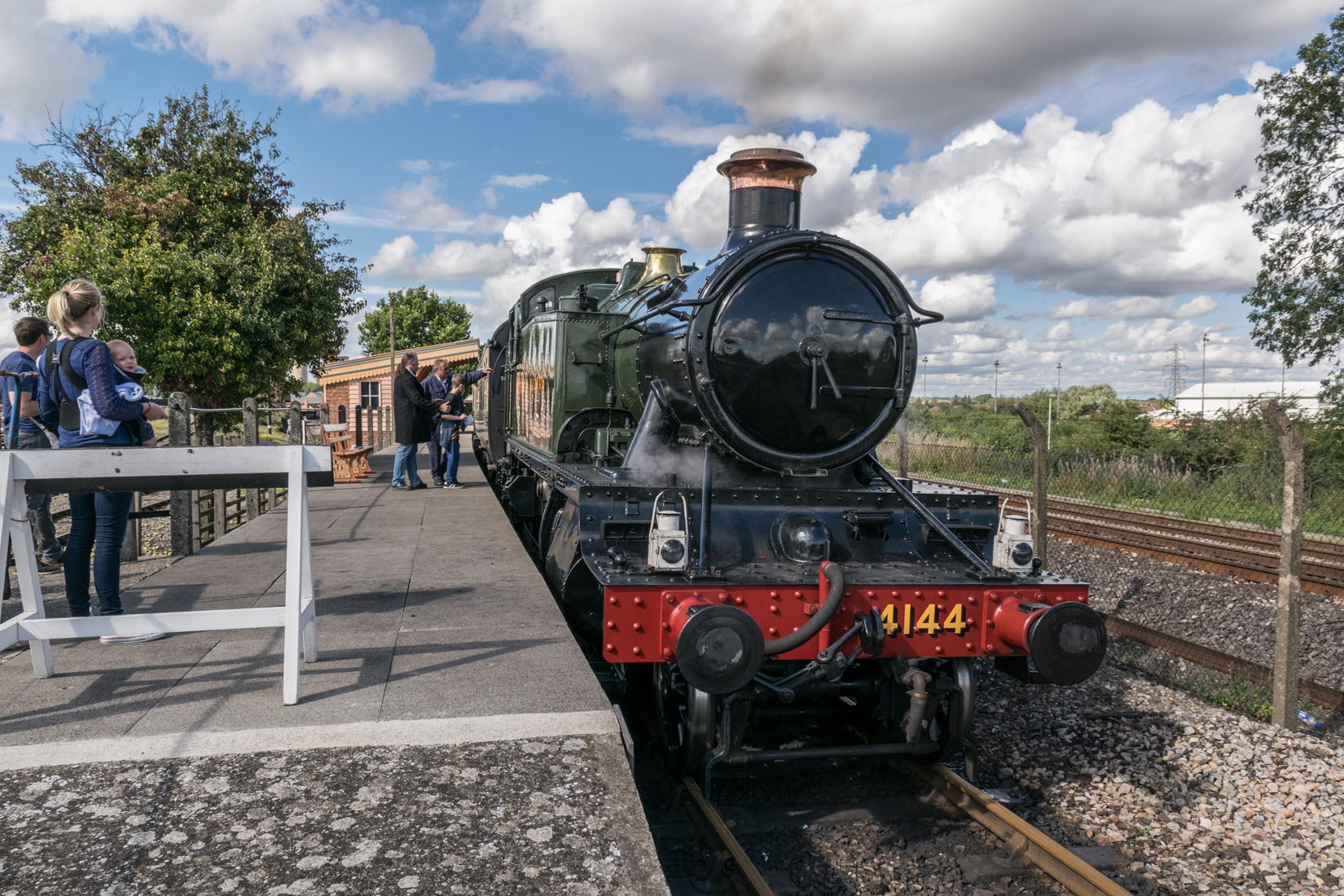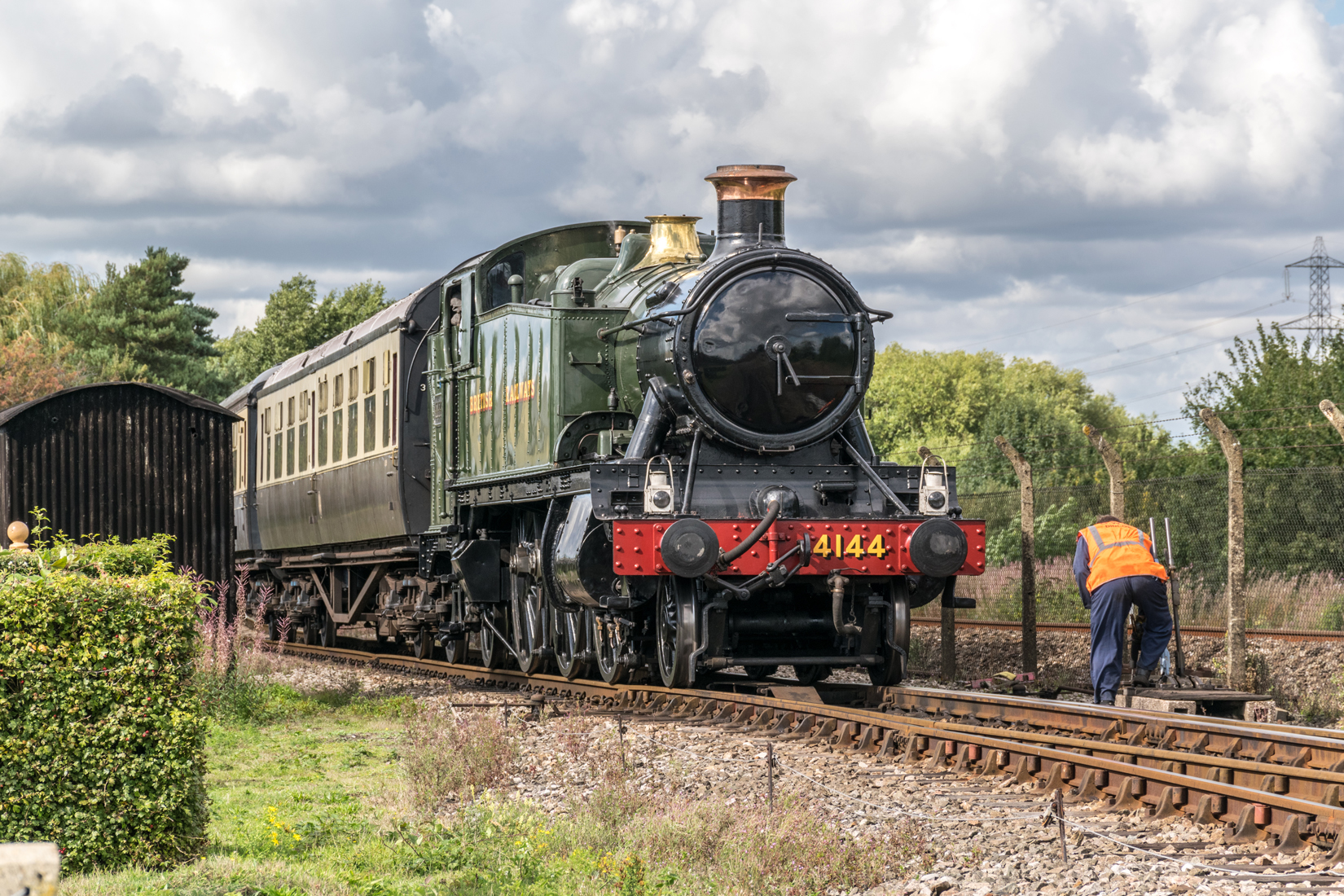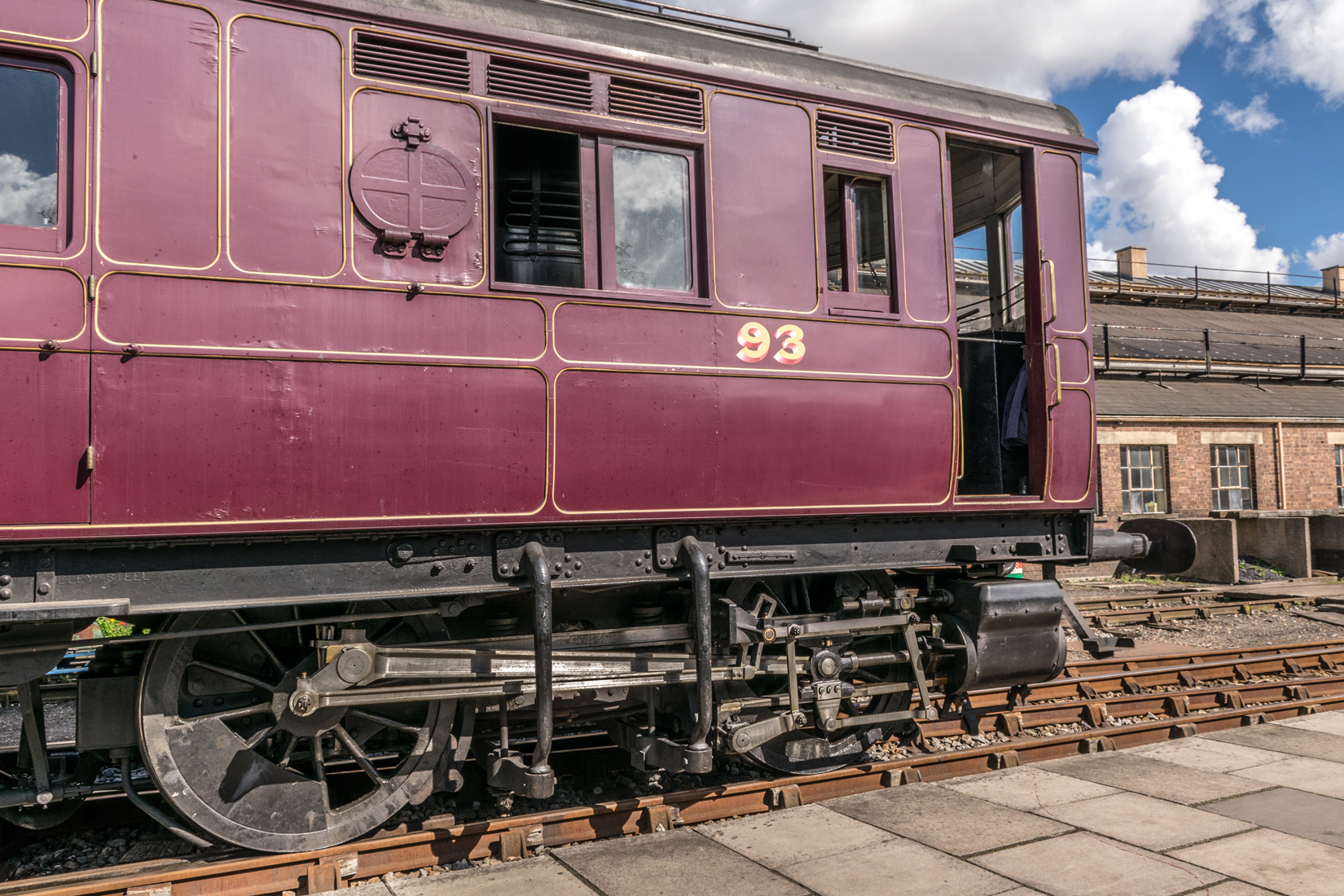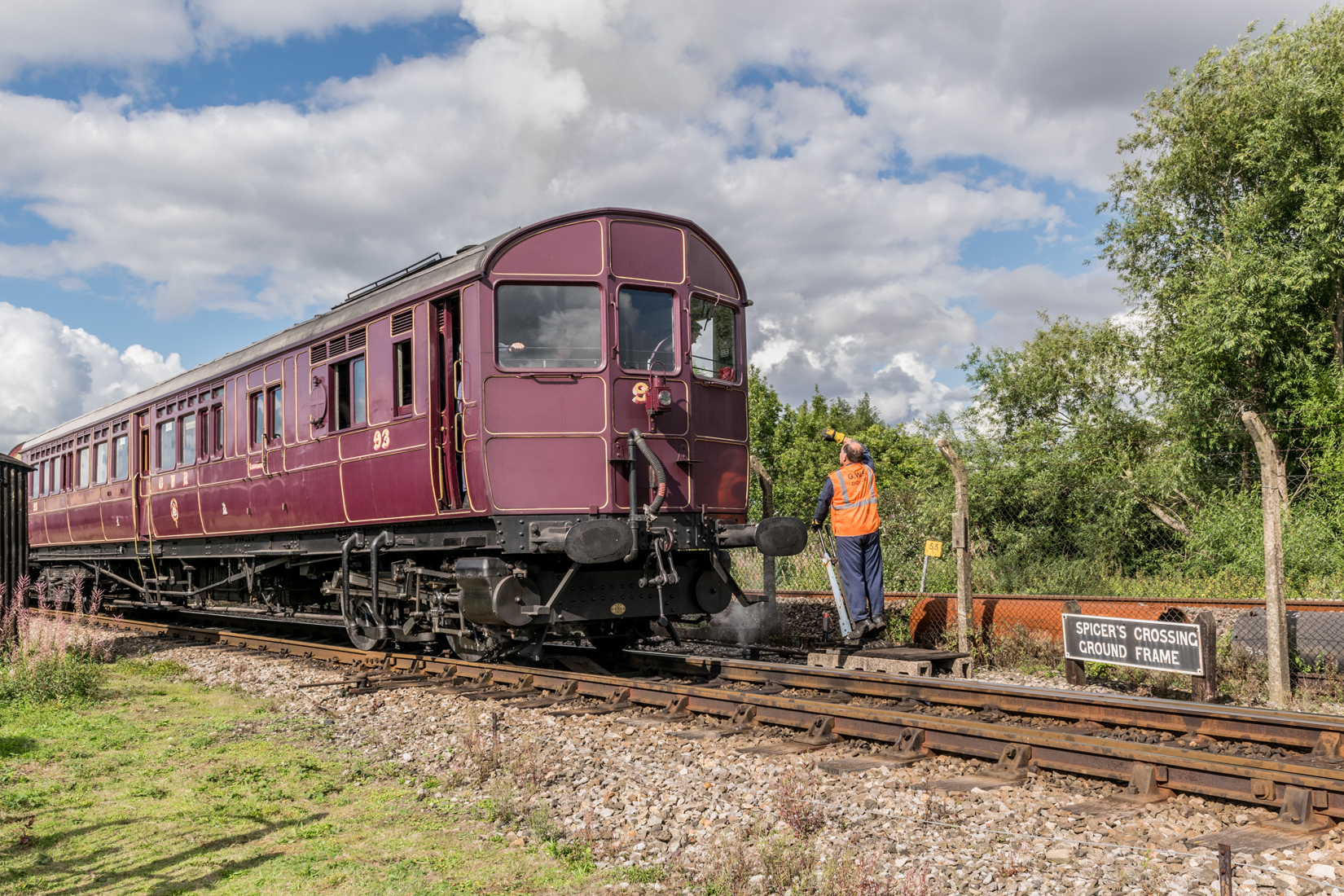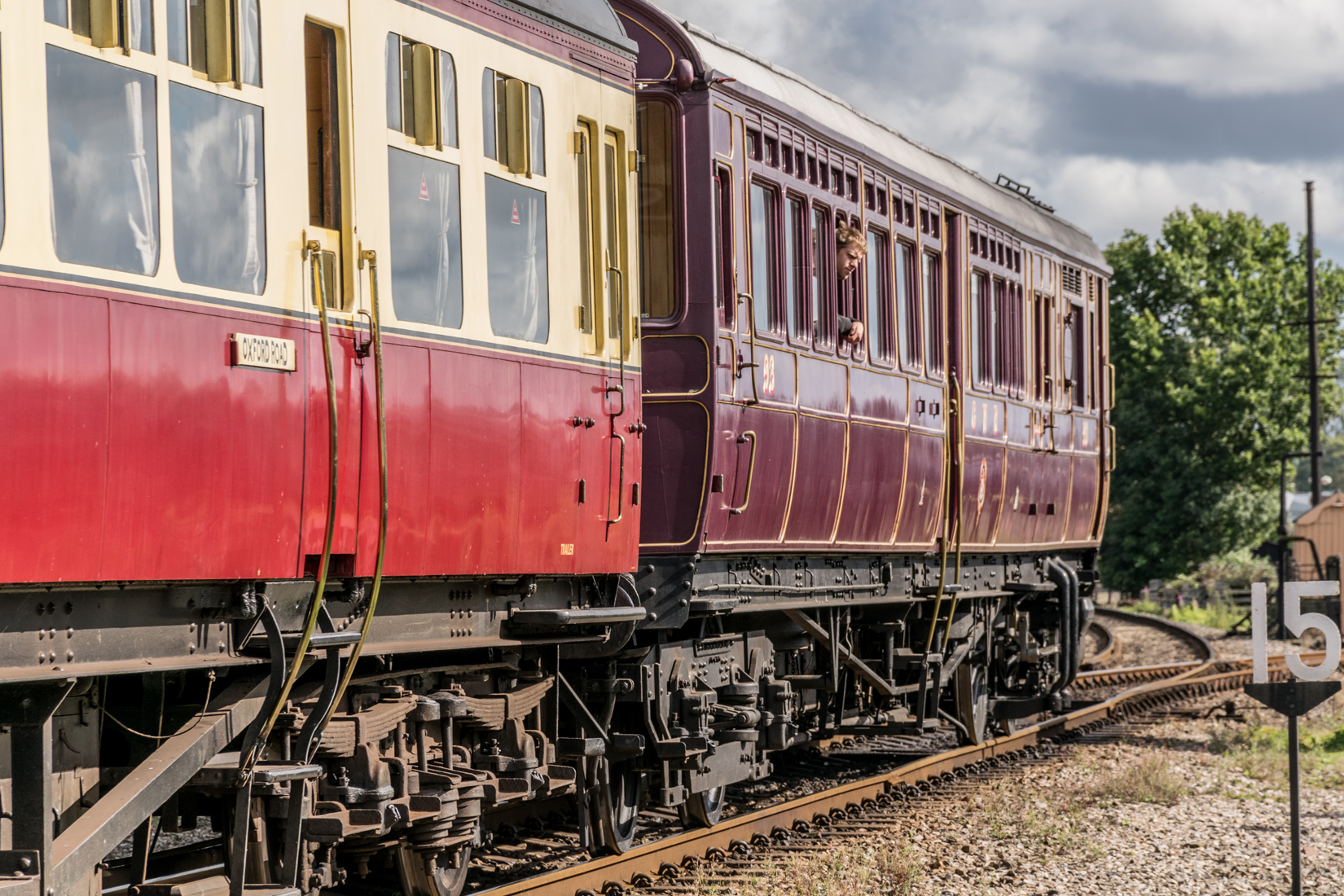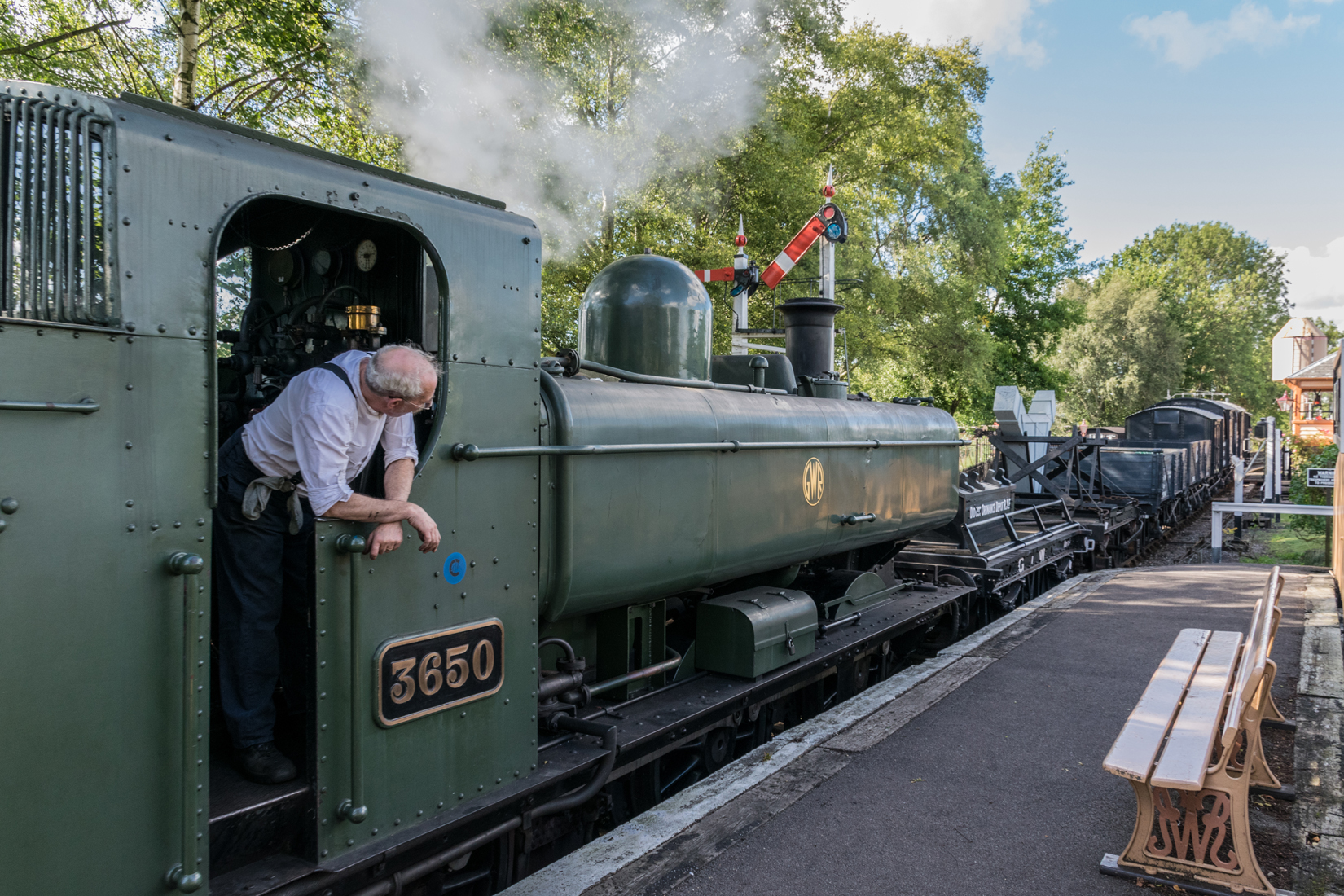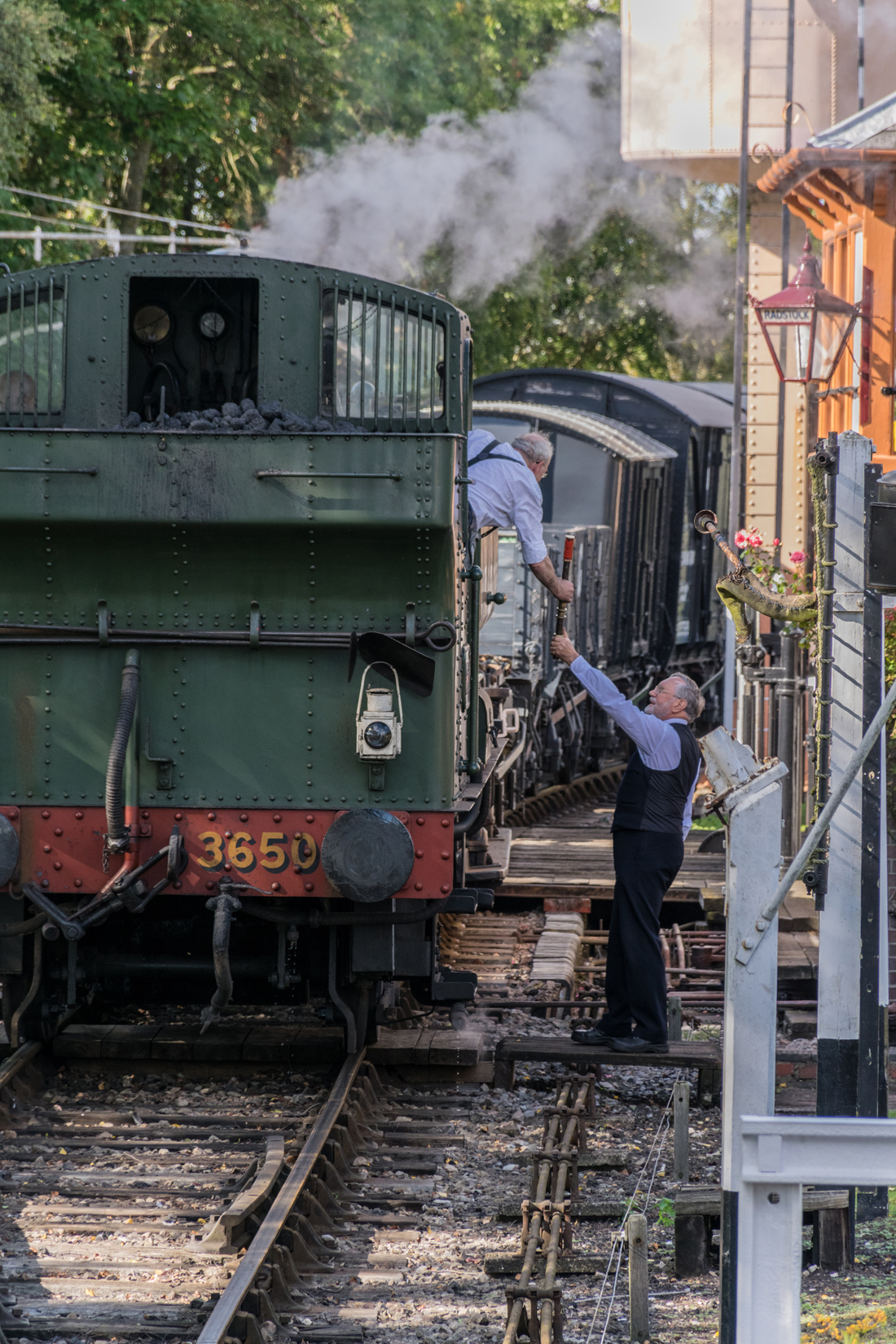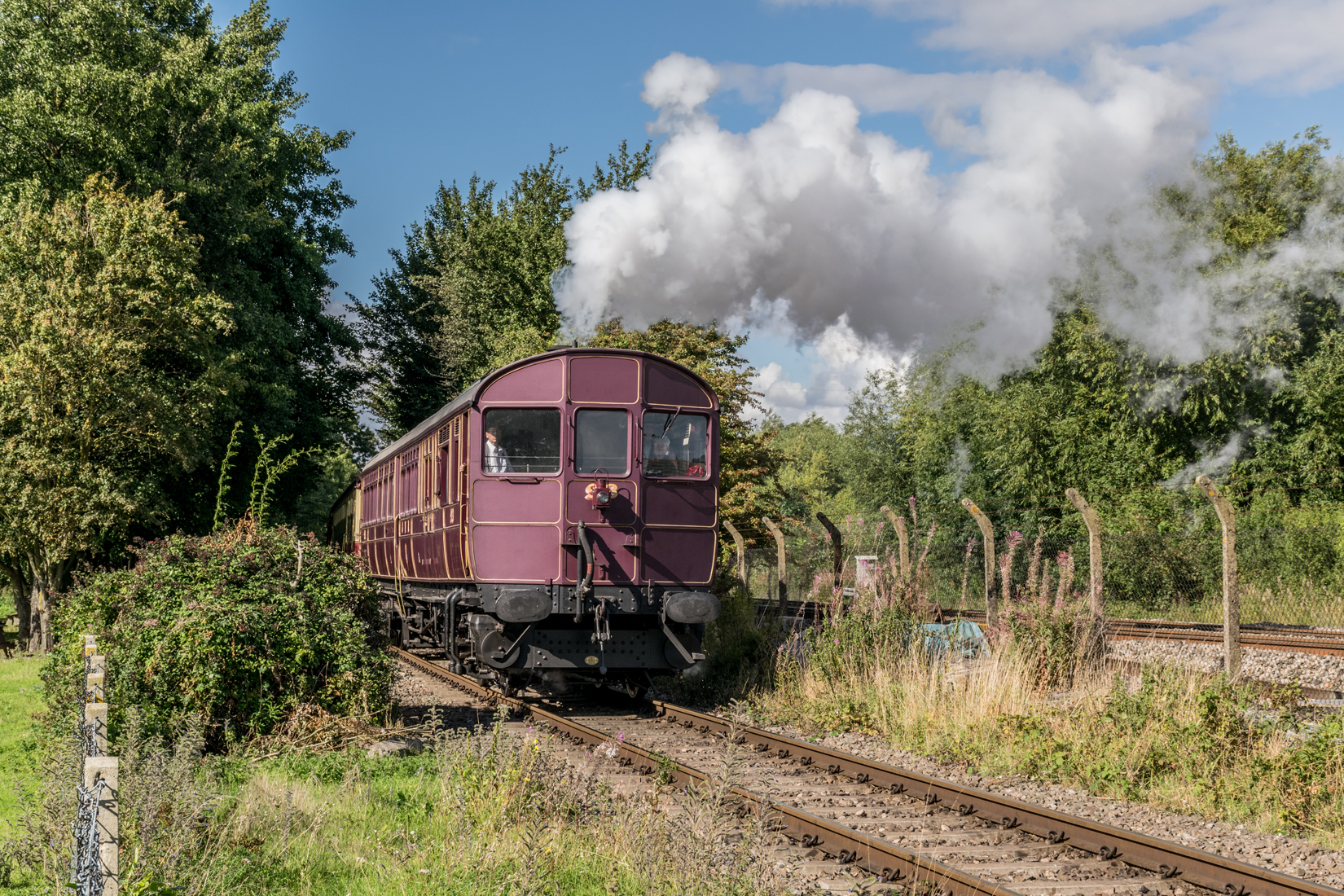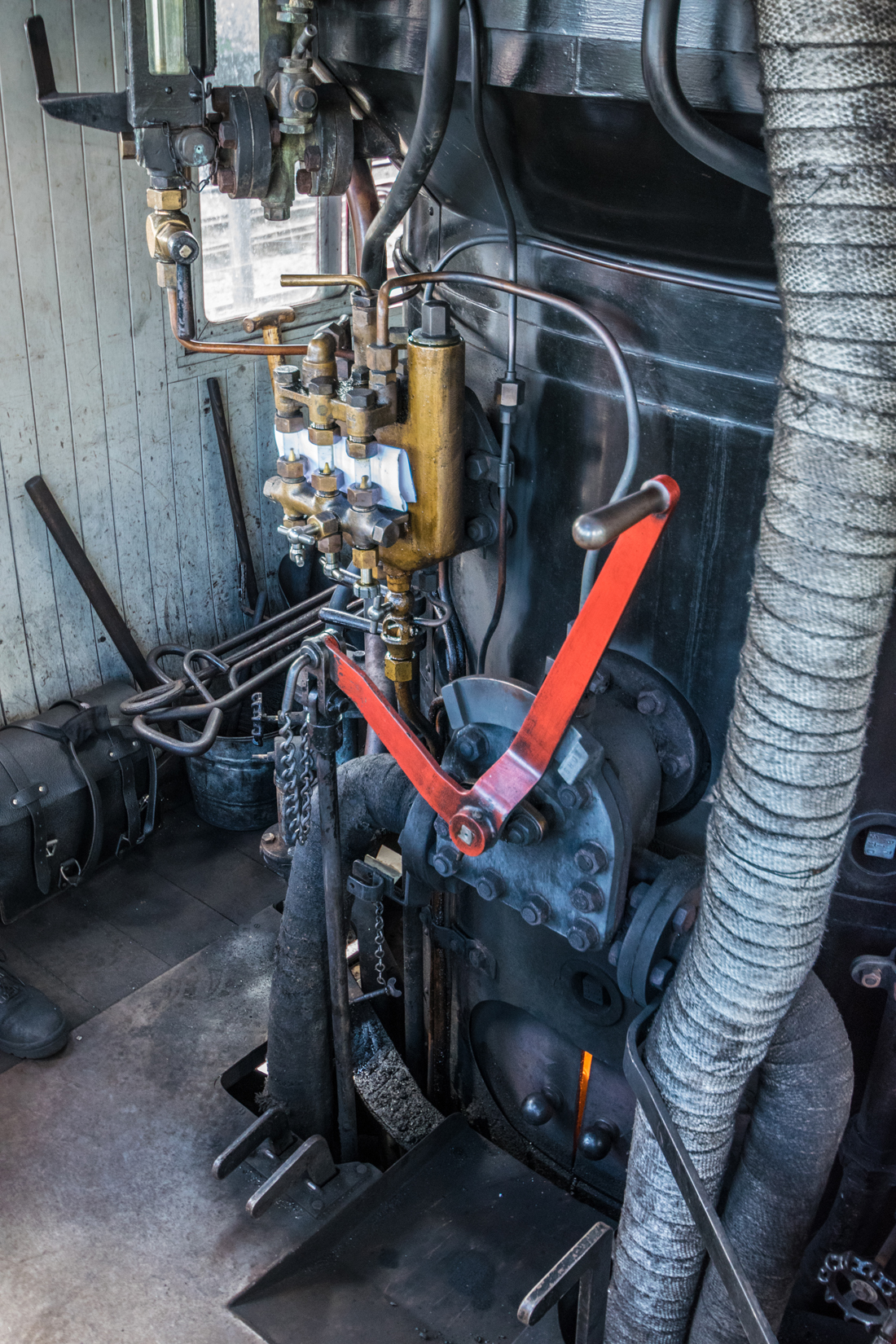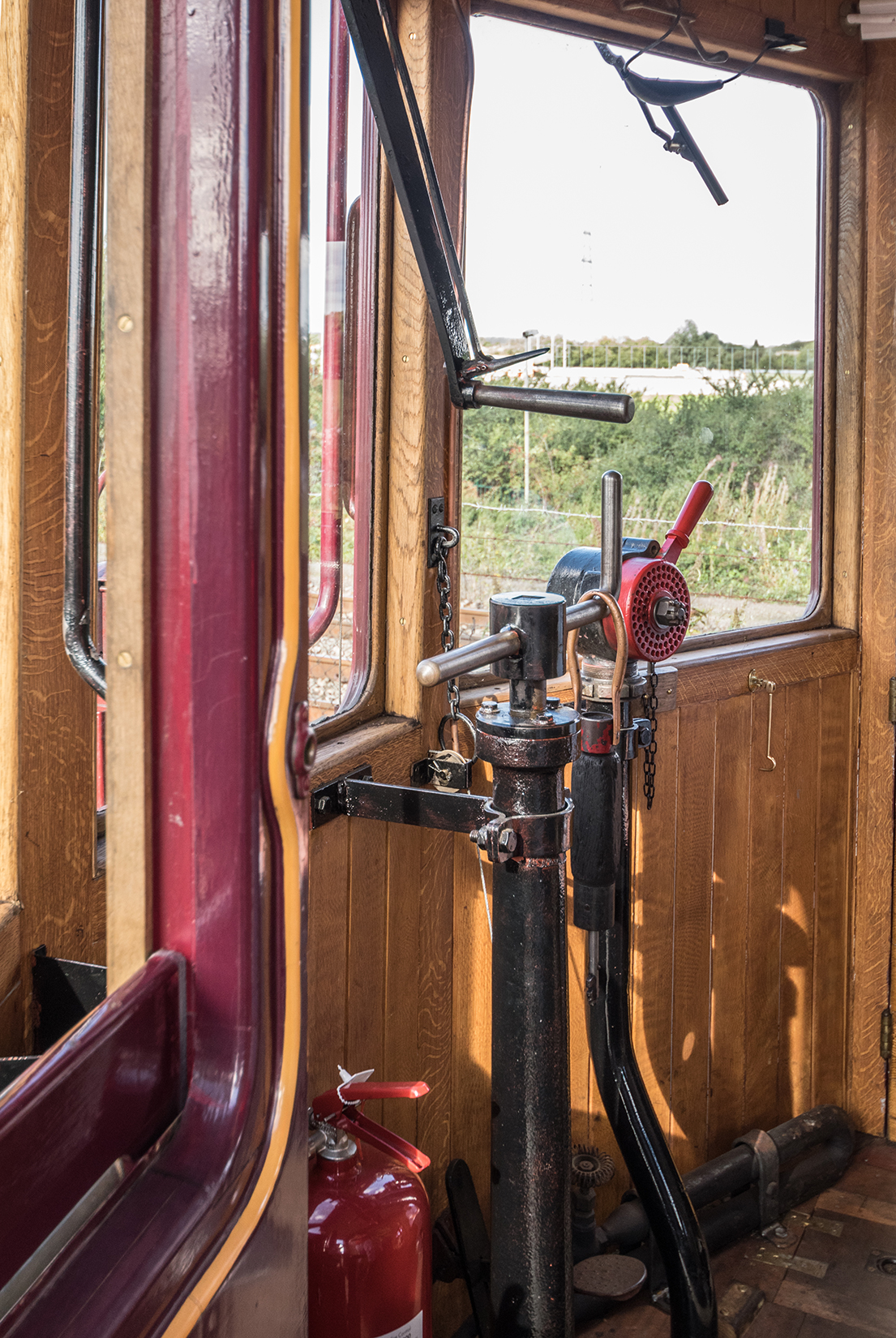Didcot Railway Centre
12th September 2015
Didcot Railway Centre is the home of The Great Western Railway Society.
The society is said to have begun with the publication by British Railways in the April 1961 edition of Railway Modeller magazine a list of 71 locomotives to be preserved, but only 10 from the GWR group - no 14xx, no Manor, no Hall.
The list was the catalyst that prompted four schoolboys to launch a fund to preserve a 14xx locomotive when Angus Davis said to his friends that if a 14xx was not to be preserved officially, they must try to buy one themselves . . .

The Great Western Railway was one of the most stylish and recognisable of the pre-grouping railway companies with its express trains hauled by Brunswick green locomotives with copper capped chimneys.
Didcot Railway Centre is the home of The Great Western Railway Society.
The society is said to have begun with the publication by British Railways in the April 1961 edition of Railway Modeller magazine a list of 71 locomotives to be preserved, but only 10 from the GWR group - no 14xx, no Manor, no Hall.
The list was the catalyst that prompted four schoolboys to launch a fund to preserve a 14xx locomotive when Angus Davis said to his friends that if a 14xx was not to be preserved officially, they must try to buy one themselves . . .
The four friends; Angus Davis, Graham Perry, Jon Barlow and Mike Peart, decided to write a letter to the Railway Magazine to publicise their 14xx fund.
The cost of launching the Society was a three penny stamp (1.25p in decimal coinage). As pressure mounted for more steam locomotives to be purchased before they disappeared, the Society was offered the use of the engine shed at Didcot that had become redundant . . .
They moved in with three locomotives and a number of carriages in 1967. Since then its members have transformed the area into Didcot Railway Centre. That initial tiny investment has resulted 50 years later in an organisation that is responsible for assets in excess of £12 million.
The range of activities and facilities operated at Didcot by the now registered charity of The Great Western Society is substantial and you can find out more about the Centre from exploring their website or by visiting the Centre.
[source: The Great Western Society]
